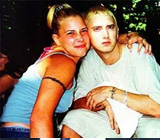

"In our Northern California study population, it does not appear that families use complementary and alternative treatments due to the lack of availability of conventional services," said Dr. Robin Hansen, chief of the Division of Developmental Behavioral Pediatrics in the UC Davis School of Medicine. "Rather, they use the treatments in addition to conventional approaches." Yet these approaches do not include a single Food and Drug Administration-approved medical treatment for the core symptoms of the disorder. "The behavioral and educational interventions for autism have a strong evidence base and [are] well accepted as the most effective treatments for autism," Kathleen Angkustsiri, assistant professor of developmental and behavioral pediatrics at UC Davis, told Medical Daily in an email. "Our study suggests that parents use CAM in addition to (as opposed to instead of) well-established treatments. Although we did not specifically ask them why they chose to use CAM, this finding would suggest that even in the presence of FDA-approved treatments, families would still choose to use CAM."
More Than One Third Of Adults Use CAM
Complementary and alternative medicine (CAM) is the term for medical products and practices that are not part of standard care, which is practiced by medical doctors, nurses, and some others in the healthcare profession. In the National Health Interview Survey of 2007, the most recent statistical year, over one third of all adults (38 percent) reported using CAM sometime during the previous 12 months. The same survey found that 83 million adults spent nearly $33.9 billion on CAM, a significant portion of the total out-of-pocket expenditures on health care. In short, many Americans are investing not only their faith but also their honest cash in non-standard medicine and alternative treatments in an attempt to coax a positive outcome from a negative circumstance. Naturally this raises many questions, including whether or not such treatments might be recognized as standard services reimbursed under both private and government-sponsored insurance plans.
The cause of most neurodevelopmental disorders, including autism, is not known, and so these conditions have no cure. Meanwhile autism spectrum disorders (commonly referred to as ASD), which are characterized by repetitive behaviors, difficulties in social interaction, and often cognitive disability, affect approximately one in 88 children in the U.S. Many of these children suffer from an array of symptoms that make the daily lives of their families nearly impossible to endure. It is perhaps for this reason that parents often seek CAM treatments. To investigate such practices, Hansen and her team of researchers conducted a Childhood Autism Risk from Genetics and the Environment (CHARGE) study, which enrolled 600 children between the ages of 2 and 5 with autism and developmental delay.
Of the total participants, 453 were diagnosed with an autism spectrum disorder (ASD) while 125 had been diagnosed with developmental delay (DD). The researchers found the rate of CAM use more common among children with autism (40 percent) when compared to children with other types of developmental delay (30 percent). The most common CAM treatment? Dietary supplements were used by 24.7 percent of children with autism and 18.4 percent of those with developmental delay. And although the researchers hypothesized that severity might be a deciding factor for CAM use, they found that low-functioning children with ASD were neither more nor less likely to receive CAM than high-functioning children.



















